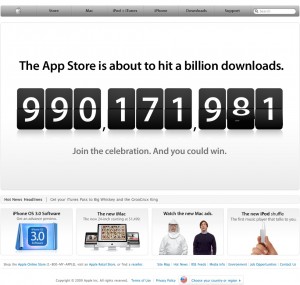Android G1 coming to Canada via Rogers
 Tuesday, May 19, 2009 at 12:31PM
Tuesday, May 19, 2009 at 12:31PM
By Gadjo Cardenas Sevilla
Currently the only smartphone running Google's Android OS, the G1 (AKA HTC Dream) is finally being made available in Canada on June 2nd.
The Google smartphone, which is considered a viable rival to Apple's iPhone 3G - offers users both a touch-enabled smartphone and a full QWERTY keyboard as well as access to an online store for free applications as well as quick-reach connectivity to Google's GMail, Calendar, Maps and other cloud based services. It willbe interesting to see how the G1 fares in the land of BlackBerry and against the popular iPhone.
Another Market
One of Google's advantages as a mobile platform is the accompanying Android Marketplace which is similar to Apple's iTunes App store and enables users a means to access applications through the smartphone using Roger's 3G service or Wi-Fi.
Most of the applications are currently free, the majority may not be that great but the point is this can evolve to the point where it can provide programmers a venue for selling their Android apps.
 Will the G1 find its way into your hands come June 2?
The good news is that we now have some competition in terms of handsets and platforms. Hopefully all the kinks associated with the early G1 models (namely non responsive touch screens, glitchy software and freezing) would have been addressed prior to the Canadian launch.
Early impressions
We had the opportunity of taking the G1 for a spin a few months after it was released in the US. We found the build quality very good. The keyboard could use more tactile feedback but is nevertheless is way easier to use than any software keyboard. The sliding form factor is well implemented and the scroll-ball helps in navigating the launch screen. We liked that the Android OS is able to do over-the-air software downloads and updates and were able to experience this first hand. The experience beats having to download the update on a PC and transfer to the device.
We are interested in seeing a new mobile OS compete in the Canadian market and will be watching developments very closely.
In the meantime,here a few features users can expect from the Android G1:
-3.2-inch TFT-LCD flat touch-sensitive screen with HVGA (320 X 480 pixel) resolution.
-Full 5-row QWERTY keyboard.
-One-Touch Google Search™.
-Customizable Home screen with instant Email, text message and IM notifications.
-Instant access to mobile Internet services (Gmail™, YouTube™, Google Maps™, Google Talk™, Google Calendar™).
-High-speed 3.5G network connection.
-Wi-Fi technology with seamless transition to open networks.
-Android Market™ with access to variety of software and media downloads. (some fees may apply)
-3-.2 megapixel color camera with auto focus.
-microSD™ (SD 2.0 compatible) expansion slot for all your storage needs.
Will the G1 find its way into your hands come June 2?
The good news is that we now have some competition in terms of handsets and platforms. Hopefully all the kinks associated with the early G1 models (namely non responsive touch screens, glitchy software and freezing) would have been addressed prior to the Canadian launch.
Early impressions
We had the opportunity of taking the G1 for a spin a few months after it was released in the US. We found the build quality very good. The keyboard could use more tactile feedback but is nevertheless is way easier to use than any software keyboard. The sliding form factor is well implemented and the scroll-ball helps in navigating the launch screen. We liked that the Android OS is able to do over-the-air software downloads and updates and were able to experience this first hand. The experience beats having to download the update on a PC and transfer to the device.
We are interested in seeing a new mobile OS compete in the Canadian market and will be watching developments very closely.
In the meantime,here a few features users can expect from the Android G1:
-3.2-inch TFT-LCD flat touch-sensitive screen with HVGA (320 X 480 pixel) resolution.
-Full 5-row QWERTY keyboard.
-One-Touch Google Search™.
-Customizable Home screen with instant Email, text message and IM notifications.
-Instant access to mobile Internet services (Gmail™, YouTube™, Google Maps™, Google Talk™, Google Calendar™).
-High-speed 3.5G network connection.
-Wi-Fi technology with seamless transition to open networks.
-Android Market™ with access to variety of software and media downloads. (some fees may apply)
-3-.2 megapixel color camera with auto focus.
-microSD™ (SD 2.0 compatible) expansion slot for all your storage needs.
























